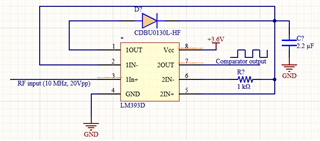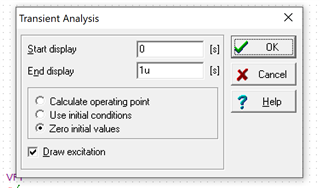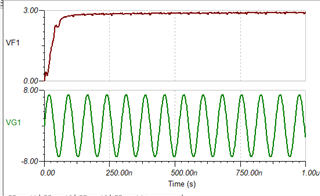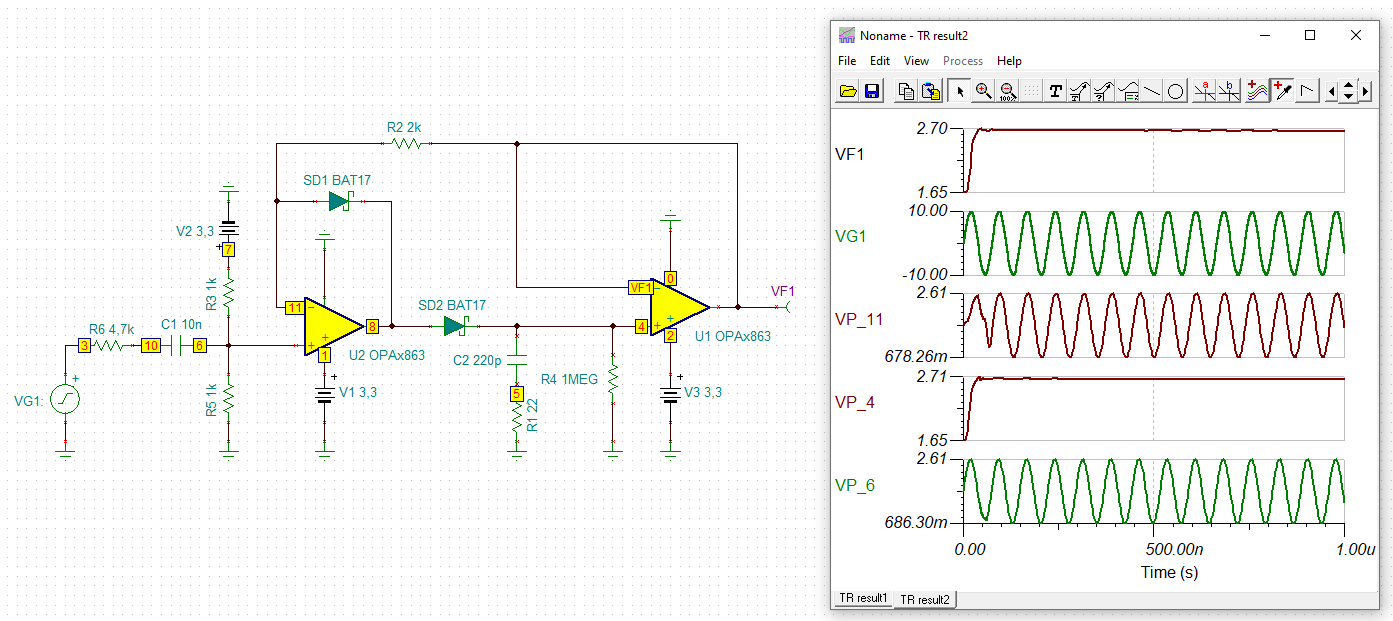Other Parts Discussed in Thread: LM358, OPA615
Hi community,
I am looking for designing an envelope detector circuit using LM393D. Since the IC has dual op-amps I would like to utilize one op-amp as a buffer input whereas another opamp as a comparator output.
I designed the following schematic circuit but not sure if it meets the purpose since the input oscillating RF frequency amplitude is high (20Vpp) and also I am trying to operate LM393D in a single input mode with Vcc=3.6V.
I appreciate your support.

Thank you for your time and consideration in advance.
Best regards,




